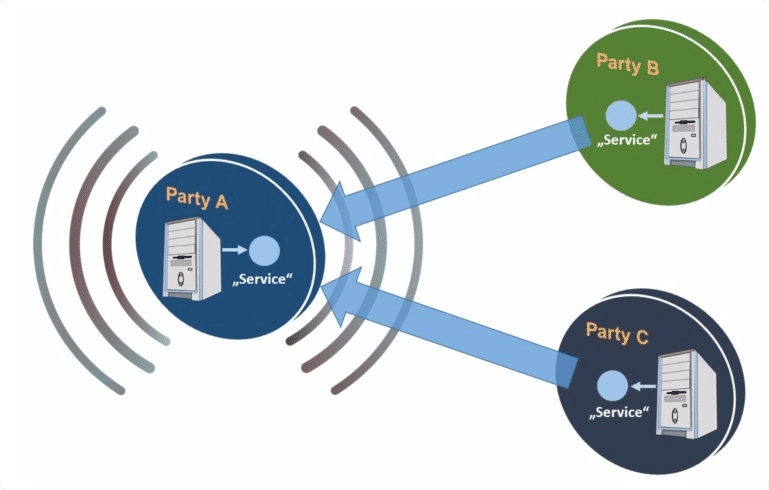TIDE
SUCBAS cooperation is based on the so called TIDE (Technology for Information, Decision and Execution superiority) initiative originally developed by NATO ACT (Allied Command Transformation).
TIDE is developed to be used when heterogeneous organizations come together to cooperate. The TIDE concept acknowledges cooperation where there is no central organization that handles central infrastructure. All cooperation is voluntary and based on agreed standards.
Ontologies
Within SUCBAS and TIDE services are based on ontologies to create a more open environment for information sharing. An entity can be described by one or several ontologies at the same time. In the (simplified) example below a vessel is described using two ontologies: “Vessel” and “Position Report”. Static information like ship name and nationality is contained in the “Vessel” ontology and dynamic information like ship’s position is enclosed in the “Position Report” ontology. The common element for both ontologies linking the information together in this case is a Ship ID.

Service Discovery
A vital part in a dynamic environment is how services are found. In SUCBAS the common strategy is using multicast Domain Name System (mDNS) DNS2.
The technology is based on DNS with records A (The “A” record stands for Address and it is the most basic type of DNS syntax. It indicates an actual IP address to a domain.) and MX (mail exchanger record). In these records information about services is sored (DNS Service Discovery). In the picture below Party A is searching for services. Party B and Party C have already registered services locally on their machines.
When party A broadcasts a call searching for services Party B and Party C respond with their matching results.

Information Discovery
The TIDE Information Discovery concept utilized within the SUCBAS cooperation evolved out of the requirement to discover, extract, and make useful information from emerging and legacy systems. To achieve the desired effect the participating systems must implement the “Information Discovery Protocol”. This protocol is designed to be scalable and small and easy to implement.
The Information Discovery concepts are implemented in two distinct delivery mechanisms:
- The Request-Response implementation is a web services (http) based on Representational State Transfer (REST6) style calls, and
- The Subscribe-Publish implementation is based on the streaming services provided by XMPP.
